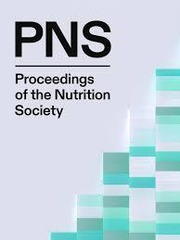No CrossRef data available.
Article contents
Who is feeding our children? A Yorkshire based overview of primary school food provision
Published online by Cambridge University Press: 11 August 2025
Abstract
This abstract was awarded the student prize for best oral presentation.
Research shows that beneficial diets in childhood support better physical, mental, and economic outcomes on a population scale (1). As 9 million UK children consume 30% of their daily food at school (2) the school lunch caterer plays an important role in the delivery of health supporting food. Unfortunately, school food provision is fragmented and complex with several conflicting priorities affecting food quality (3). Financial viability of provision is affected by school characteristics, with additional revenue from state free school meal (FSM) funding (4) and small, rural schools often making a loss (5). Despite £700m of annual public sector spend on school food (6), there is no central record of provision and a lack of research hindering effective policy and practice. This study aims to understand who provides school food in Yorkshire.
Details on providers and contracts for school food provision in 1,771 state funded primary schools across the 15 local authorities in Yorkshire was mapped, along with key characteristics (school size, geography and deprivation) and analysed. Data on the school food provider were collected through a school survey, lists from local authorities, and desk-based website review. School characteristics were obtained from public records. Descriptive statistical tests were performed to establish prevalence and central tendencies and independent sample anova established significance of differences in school characteristics between provider types.
Three provider types were identified; local authority caterer, commercial caterer, and in-house caterer (including academy trust). School size varied widely from 5 to 789 children (M= 271, SD = 146) with 12% of schools (n=206) having fewer than 100 pupils necessary to financially breakeven (4). Local authority caterers serve most schools (48%) and had the highest proportion of small, rural schools (headcount: M = 256, SD = 150, p<0.001, rural =33%) and the lowest deprivation (FSM: M = 21.9%, SD = 14.4%, p<0.001). Commercial caterers serve 30% of schools, with the largest schools (M = 289, SD = 134, p<0.001) and the highest proportion of urban schools (79%), indicating higher profitability potential. Just 5 companies accounted for 78% of the commercial catering. In-house catering was less prevalent at 8% and data were unavailable for 14% of schools. Provision models were not always clearly defined, and some local authorities had no, or partial, catering service or outsourcing provision to a commercial contractor.
The data further demonstrates the fragmentation and complexity of school food provision and the differences in school characteristics which may affect the quality of school food through financial viability. Given the potential to leverage public funding of school food provision and the urgency of the UK health crisis, further research is needed to understand how the provision contract type may influence dietary health through the quality of food provided.
Information
- Type
- Abstract
- Information
- Copyright
- © The Author(s), 2025. Published by Cambridge University Press on behalf of The Nutrition Society


